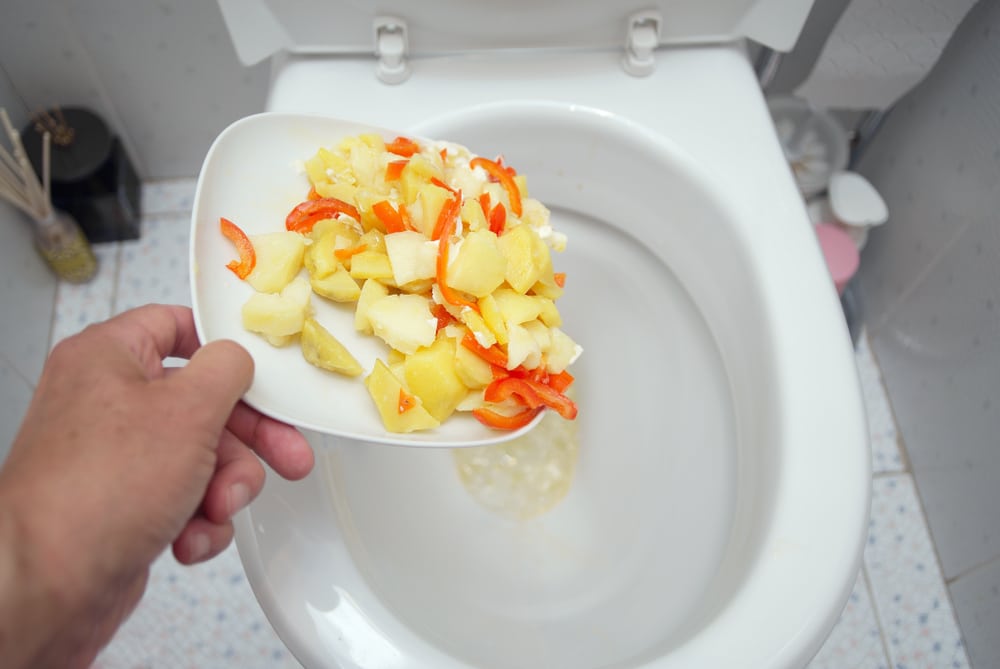Are You Capable to Flush Food in the Toilet?
Are You Capable to Flush Food in the Toilet?
Blog Article
Everybody will have their own piece of advice on the subject of Is it safe to flush food (especially rice) down the toilet?.

Introduction
Many individuals are frequently confronted with the problem of what to do with food waste, specifically when it pertains to leftovers or scraps. One common question that arises is whether it's okay to purge food down the bathroom. In this post, we'll delve into the reasons that people could take into consideration flushing food, the effects of doing so, and alternate approaches for appropriate disposal.
Reasons that people might think about flushing food
Absence of awareness
Some individuals might not know the potential damage brought on by flushing food down the commode. They might mistakenly think that it's a safe method.
Benefit
Flushing food down the toilet may feel like a fast and simple solution to taking care of undesirable scraps, particularly when there's no close-by trash bin offered.
Idleness
Sometimes, people might merely choose to flush food out of large laziness, without considering the repercussions of their activities.
Consequences of flushing food down the bathroom
Environmental influence
Food waste that winds up in rivers can add to pollution and damage water communities. Additionally, the water used to purge food can stress water sources.
Pipes problems
Flushing food can bring about clogged up pipelines and drains pipes, triggering expensive plumbing fixings and inconveniences.
Sorts of food that must not be flushed
Coarse foods
Foods with fibrous textures such as celery or corn husks can get entangled in pipes and trigger obstructions.
Starchy foods
Starchy foods like pasta and rice can absorb water and swell, resulting in clogs in pipes.
Oils and fats
Greasy foods like bacon or food preparation oils must never ever be flushed down the commode as they can solidify and trigger blockages.
Correct disposal techniques for food waste
Using a waste disposal unit
For homes outfitted with waste disposal unit, food scraps can be ground up and flushed via the pipes system. Nonetheless, not all foods are suitable for disposal in this manner.
Recycling
Certain food product packaging products can be recycled, minimizing waste and lessening environmental impact.
Composting
Composting is an environmentally friendly means to deal with food waste. Organic materials can be composted and utilized to enhance dirt for gardening.
The relevance of correct waste administration
Reducing ecological damage
Correct waste administration methods, such as composting and recycling, assistance minimize air pollution and maintain natural deposits for future generations.
Safeguarding plumbing systems
By staying clear of the technique of flushing food down the commode, homeowners can prevent pricey plumbing fixings and maintain the stability of their pipes systems.
Conclusion
In conclusion, while it may be tempting to flush food down the bathroom for benefit, it is essential to understand the possible consequences of this activity. By adopting correct waste monitoring techniques and dealing with food waste sensibly, individuals can add to healthier pipes systems and a cleaner environment for all.
FLUSH FOOD DOWN THE TOILET?
FLUSHING FOOD CAN CAUSE BLOCKED DRAINS IN YOUR HOME
All of the plumbing fixtures in your home are connected to the same sewer pipe outside of your home. This outdoor sewer pipe is responsible for transporting all the wastewater from your home to the Council sewer mains. Even small pieces of food that go down the kitchen sink can cause problems for your sewer. It should therefore be obvious that flushing larger bits of food, such as meat, risks a clog in either the toilet itself or the sewer pipes. Flushing greasy food is even more problematic because oil coagulates when it cools, coating the interior lining of your pipes.
THE TOILET IS NOT A BIN
Food isn’t the only thing that people shouldn’t be flushing down the toilet. People use the toilet to dispose of all kinds of things such as tampons, makeup wipes, dental floss, kitty litter and even underwear. Water goes to great lengths to educate residents about the high costs and stress placed on wastewater treatment systems simply from people flushing the wrong stuff down the toilet. It costs taxpayers millions of dollars each year, and homeowners thousands in blocked drain repairs.
FLUSHING FOOD IS A WASTE OF WATER
Flushing food is a waste of our most precious resource - water. In June this year Level 1 water restrictions were introduced to protect water supply from drought conditions. Much of New South Wales continues to be affected by prolonged drought with recent figures revealing up to 97 per cent of the state remains in drought. Depending on whether you have a single or dual flush toilet, every single flush uses between five and 11 litres of water. In the current climate this is a huge amount of water to be wasting on flushing food that should be placed in the bin (or better yet, the compost).
https://www.jabplumbingsolutions.com.au/blog/can-you-flush-food-down-the-toilet

As a devoted reader on What Can Happen If You Flush Food Down the Toilet?, I think sharing that piece of content was essential. Are you aware of another person who is sincerely interested in the niche? Please feel free to promote it. Thank-you for going through it.
Call Us Now Report this page